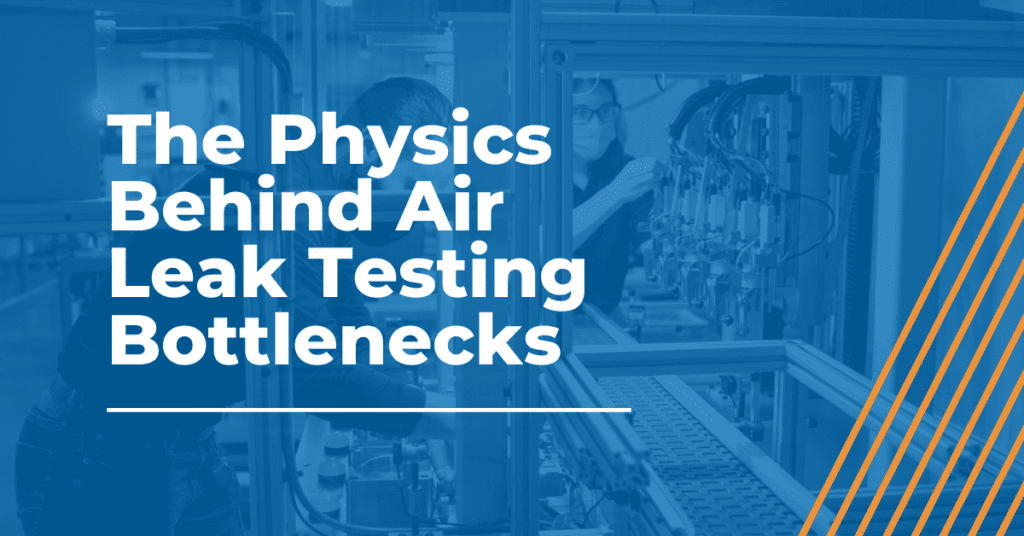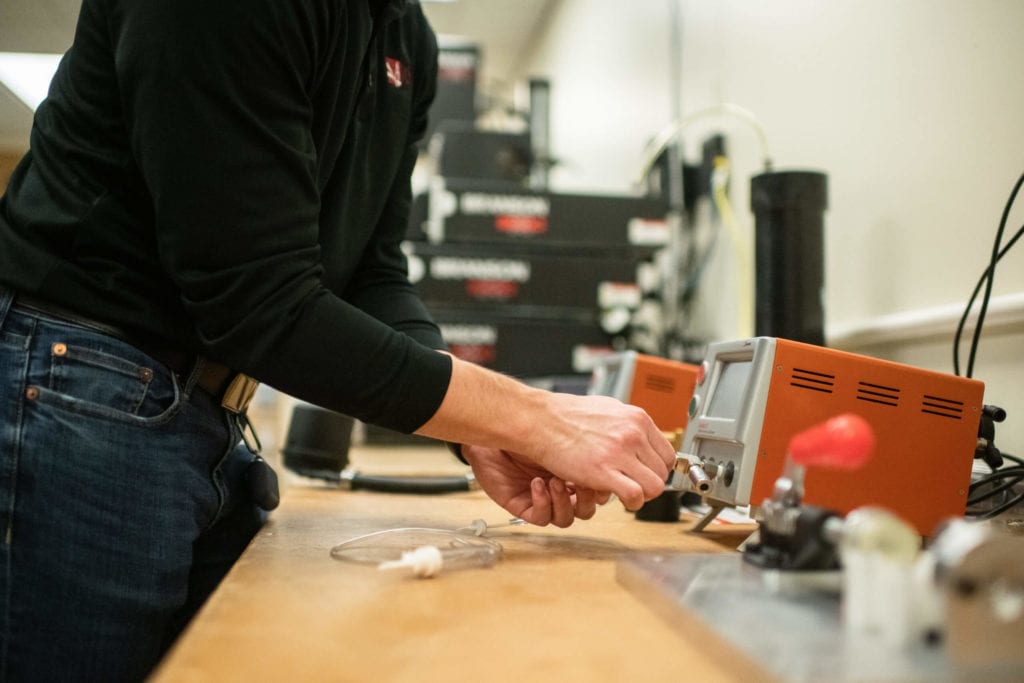
The Science Behind Why Leak Testing Is a Bottleneck in Automation
A variety of industries frequently use an air leak tester for quality control. For the medical industry, air leak testers check the quality of catheters, IV sets, tubing, implantable devices and infusion sets. In the automotive industry, air leak testers are frequently used to check plastic air intake manifolds, clean and dirty side ductwork, washer bottles and degas bottles.
Tests Performed by Air Leak Testers
Three types of testing are frequently performed by air leak testers: pressure decay, vacuum decay and mass flow air testing. For each of these tests, the pressure inside a vessel is measured to see if it remains steady, between upper and lower limits, over a defined period of time. Vessels that maintain air pressure between their specified limits over a designated time period comply with air leak specifications; those that do not earn a “defective” classification.
Given the broad applicability of air leak testing, people ask us why leak testing often bottlenecks the production process. Let’s take a look at the process and the science that impacts testing speed.
Why Does Air Leak Testing Take So Long?

Process engineers like to design highly efficient production cycles that provide maximum output with minimal cycle times, while balancing speed with quality. This drive for manufacturing efficiency sometimes butts heads with the laws of physics.
The Ideal Gas Law (PV=nRT) is one of those laws of physics. In this equation:
- P = pressure
- V = volume
- n= number of moles (Reminder, a mole is 6.02 x 10 ^ 23 atoms)
- R = ideal gas constant
- T = absolute temperature of the gas, expressed in Kelvin
The Ideal Gas Law Impacts Air Leak Testing Speed
In addition to illustrating the relationship between each of the law’s components, this law allows you to solve for any of the variables. For example:
- P=nRT/V
- V=nRT/P
- n=PV/RT
- T=PV/nR
- R=nT/PV
How Temperature Affects Pressure
Heat is a form of energy. When you heat a container with a fixed volume, the heat transfers energy to the particles within the container. As the particles move around faster and faster, the particles hit the walls of the container with greater force. This increases the container’s internal pressure. Likewise, when the temperature is reduced, the pressure decreases.
How Volume Affects Pressure
When the number of moles(n) and the temperature are held constant (remembering that R, the ideal gas constant, always remains unchanged), then there is a direct relationship between volume and pressure. Because temperature is being held constant in this example, the energy of individual particles within the container is constant. When the container size, or volume, shrinks, then more force is exerted on the walls of the container by each particle and the pressure increases. Conversely, when the size of the container expands, each particle within the container exerts less force on the container’s walls and the pressure decreases.
How the Number of Moles Affects Pressure
When temperature and volume are constant, increasing the number of moles of gas inside a container increases the pressure in the container. Each particle exerts force on the container. With more particles in the container, the aggregate amount of force exerted on the container walls is increased, which increases the pressure in the container.
Establishing the Proper Conditions for Air Leak Testers

Given the interdependent relationship between pressure, volume, temperature, number of moles and the universal gas constant, R, you must make sure your container is ready for testing prior to launching a test.
Has Your Product Cooled?
An injection molded part typically comes off the line warm. As we know from the Ideal Gas Law, temperature impacts pressure, so it is important to let the part cool to ambient temperature prior to beginning your pressure test.
Have You Allowed Time for Air to Settle?
If air is inserted quickly into a part, individual particles might still have excess energy, or a higher velocity, as they impact the walls of the container. Adequate time needs to be allotted for the air within the container to settle to its ideal state prior to beginning a test.
What Is the Barometric Pressure and Elevation at Your Testing Sites?
Ambient pressure can impact the internal pressure of your container. It is important to consider the ambient pressure, as well as the elevation of your testing sites. If you have multiple production facilities located in different geographical regions, remember to calibrate your air leak tester to take into account variations in atmospheric conditions.
Simulating Real-World Conditions for Your Air Leak Tester
Integrators frequently make claims about the accuracy of their air leak testers. It’s important to find an integrator that has a fully equipped application development lab that includes leak testing equipment and in-house custom sealing solutions to help you prove out your application. Qualified integrators will be able to provide unique, original data developed for your specific application to prove their claims.
Physics Dictates Speed Of Air Leak Testing
Regardless of how eager your production team is to improve cycle times, physics, or more specifically the Ideal Gas Law, puts limits on how far the air leak testing process can be optimized.
Do you have more questions about air leak testing? Contact us or sign up for an application review. We look forward to talking to you.
